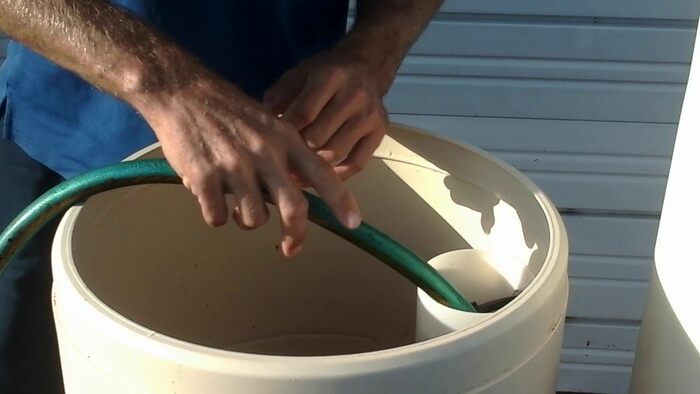
The water softener is a crucial objective in homes with well systems and in many households without one. It prevents unwanted minerals from entering your pipes and causing discoloration and calcification.
The water softener removes undesirable minerals with hot steam and replaces them with sodium first before the water enters your kitchen. It’s reliable for supplying drinking water to your house, but the resin tank might become blocked with iron and other impurities. The optimum time to do it is when the salt level is low because you won’t have a hard time removing the high salt content then.
In the resin tank, the actual water softening takes place. This shows the importance of the resin tank and the requirement for routine cleaning. You’ve arrived at the correct place if you’ve been wondering how to clean a water softener resin tank.
Tips for Cleaning a Water Softener Resin Tank
Clean your tanks if you have any suspicions about microbial or bacterial infestation. It has to be cleaned if the container has a sulfurous odor or smells like a rotten egg. A water softener resin tank has to be cleaned frequently, as you are probably aware. Here are some simple tips for cleaning a water softener’s resin tank:
- Your resin tank may be cleaned in several ways. You must wash your tank if you also notice a difference in the color of the water or if the water tastes bad after going through the softener.
- Cleaning the tank is necessary if you think there may be bacterial or microbial contamination or an unpleasant odor. If you’re not happy, you might elect to do a bacteria test; if it reveals that the water source has been tainted, you must clean the tank.
- The company’s advice on how to clean the softener unit varies. Some advice is to clean the tank every year or every three months.
- You may clean the tank in several ways or use many different strategies. To remove the tank, you must first unplug the water softener system, and the resin tank is there.
- You may also accomplish this by taking out all the bolts from the valve and removing them, after which you can clean your tank with water and bleach. You may reinstall it after the completion of the work.
- Applying iron-based cleaning solutions from your neighborhood store is another option for cleaning your tank.
How to Clean a Water Softener Resin Tank: Step-by-Step Guide
There are cleaning instructions included with every water softener. As a result, always ensure you read and comprehend the brand’s cleaning instructions in the handbook. Some manufacturers provide thorough cleaning guidelines for the saltless water softener.
- Step 1
Always follow the company’s recommendations and ensure the softener’s unit is in bypass mode. In this position, the water will run slowly, allowing you time to clean the softening unit completely.
- Step 2
Connect none of the lines running between the softening machine and the brine tank.
- Step 3
Add a resin cleanser to change the sodium, calcium, and magnesium ions in your water-softening machine. Then make sure the resin cleaner is designed particularly to remove mineral buildup. You may get an iron rust stain remover if you don’t already have a resin cleaner.
In the meantime, be sure to select a resin cleaner that is tailored to your specific requirements if you find that your resin beads include an excess of one mineral. Because some cleaners merely get rid of the system-damaging minerals, like iron. After selecting your cleaner, you may choose the ideal time to complete your cleaning.
- Step 4
Pour the necessary cleaning into the resin/brine tank after carefully reading the manufacturer’s instruction booklet. Put the cleaning into the salt tank instead, but ensure the salt concentration is low if your water-softening equipment does not have a brine tank.
- Step 5
Use a flathead screwdriver to adjust the regeneration control knob in the counterclockwise direction. Locate the knob, which is placed near the control valve. The system will need to be manually recharged, or the resin bed will need to be regenerated once it is in regeneration mode. Regeneration turns the water flow on its side to flush out all types of dirt from the appliance. To aid in cleaning the resin beads, sodium ions are introduced to the mineral tank.
- Step 6
Continue the regeneration process by adding a fresh resin cleaner to the brine tank. The regeneration procedure should then be repeated to eliminate any leftover minerals. Evaluate the resin bed and repeat the regeneration process if the resin bed still contains these unwanted materials.
- Step 7
To return the softener unit to its original settings, turn the regeneration knob clockwise.
- Step 8
After finishing, drain the water out. Close the control panel after draining the water out to eliminate the resin cleaner from the softening unit, and then let the tap run for around 10 minutes.
- Step 9
You must frequently repeat the procedures to make sure your machine is operating as it should. However, since more water will be utilized throughout the summer, you might need to do the regeneration procedure more regularly.
Summing Up!
Finally, the optimum way to wash a resin tank is when the slats are getting low so that you do not have to dump all the salt. Cleaning your resin tank might be difficult, but it is necessary. Hope this
Maintaining your resin tank regularly will assist in extending the life of your water softener. Because the resin tank is so important in the water-softening process, it requires careful attention. We hope this article has given you better knowledge on how to clean a water softener resin tank properly.
